Our Verdict
Homeworld 3 is a welcome return for one of strategy gaming’s most revered series, although the sometimes-clunky interface can make it feel older than it is.
Homeworld 3 is something of a time capsule. Arriving two full decades after the previous game in the main series, it feels like it’s been dropped out of hyperspace from an alternate dimension, one where the initial ’90s RTS boom never faded into obscurity. For Homeworld 3, remarkably little has changed – this is the same balletic, fully 3D RTS combat the original two Homeworld games pioneered.
However, this branch of the RTS family tree has been largely left to wither in the series’ long absence, and so while it’s a delight to be directing bombastic deep-space battles again, one is left to wonder about the missing 20 years of iteration and innovation and how they might have changed the game we have before us now. Modeling a battlespace in which every individual unit has full six degrees of movement is difficult, it turns out – and Homeworld 3 is evidence that it’s still not a solved problem.
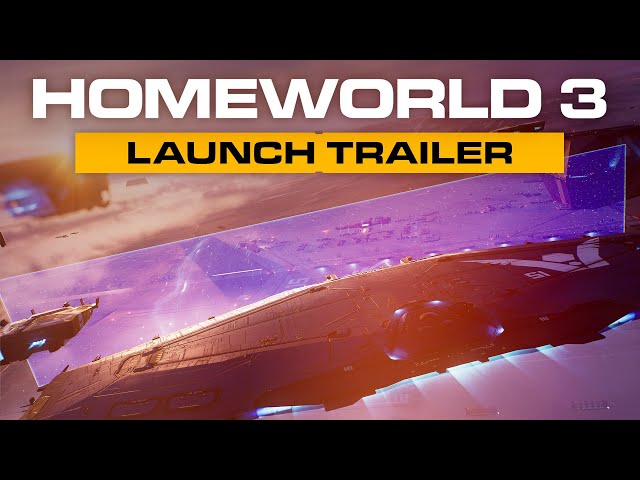
Twenty years have passed in the Homeworld universe since Karan S’jet, the brilliant scientist who served as the navigator and fleet command in Homeworld 2, disappeared on a journey into a dark corner of the galaxy known as the Anomaly, where she sought to learn why it was disabling gates in the hyperspace network. Her protege, Imogen S’jet, sets out in a newly commissioned mothership, the Khar-Kushan. Its mission is to figure out what’s going on and – hopefully – restore the Hyperspace Gate Network that has brought about a new age of prosperity and enlightenment to the galaxy.
The campaign’s story is told over the course of about a dozen missions, and I’ve mostly enjoyed how the dramatic cutscenes seamlessly transition into gameplay. Characters are talkative throughout, particularly Isaac, the Khar-Kushan’s fleet intelligence officer. He’ll take several minutes to explain each mission as the action begins, and this was occasionally frustrating when I wanted to start a mission over from scratch to try a different approach (usually one that wouldn’t end up with my mothership exploding in a tremendous ball of blue-white energy). Instead of waiting through his stern soliloquies, I wound up creating saves in each mission as soon as he was finished talking, which saved me having to listen to briefings I’d already heard.
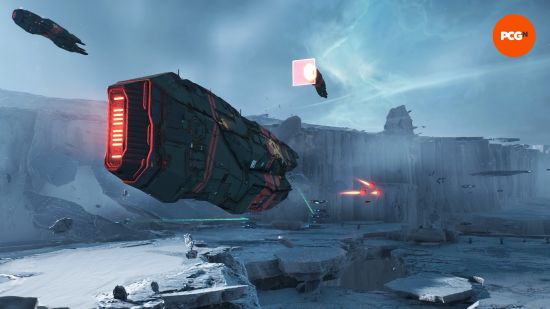
It took me a while to settle back into the once-familiar rhythms of Homeworld, and once I did, I was delighted with each mission. While they still involve the full-3D movement of the original games, each battle in Homeworld 3 includes a lot more topography than you might expect to find in space. Engagements take place around ancient interstellar superstructures and cosmic ice sheets, many of which are riddled with tunnels and crevasses that allow you to sneak strike craft around enemy defenses. Floating objects, including larger ships, can be used as cover from incoming fire.
My favorite aspect of the original Homeworld was the notion of a persistent fleet. Ships you built or scavenged in one mission would carry over to the next, while any vessels you lost were gone forever. That’s once again the case in the Homeworld 3 campaign, although this option can be disabled if you don’t care for it.
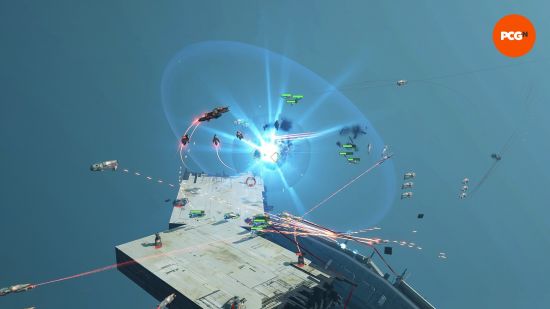
You don’t need any prior knowledge of Homeworld to enjoy this entry, although the story may not feel as impactful if you haven’t played the earlier games, as well as the planetside entry, Deserts of Kharak. The campaign serves as an introduction to combat in three dimensions, as well as the types of units available in the Hiigaran fleet.
Perhaps the most important lesson it teaches is the necessity of combined arms. No particular ship or ship class is ever a silver bullet – each ship, from the tiniest interceptors to the intimidating battle cruisers, have weaknesses that must be covered for by other ship types. Frigates and corvettes can pump out a lot of firepower, but they’re too slow and ungainly to reliably track a swarm of interdiction fighters. Long-range missile boats can take out point defenses with ease, but they’re fragile and helpless if left on their own.
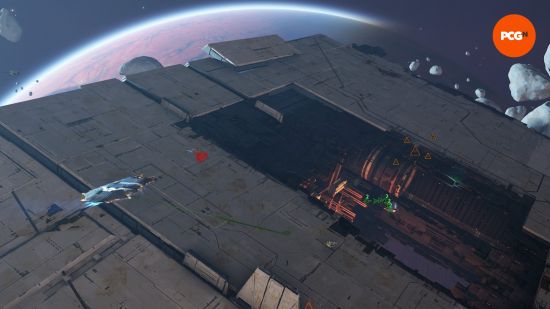
This overlapping system of strengths and weaknesses makes force composition a key consideration at the outset of each battle, but I found it could be ungainly in practice. Like most modern RTS games, you can double-click any unit to select all units of that type in the area, and you can create hotkey-bound command groups of ships to pull up by pressing the corresponding number key. But because the campaign loves sending you surprising new threats, it’s futile to try to get very scientific about group composition. Most of the time, I found myself band-selecting a likely-looking blob and sending it to intercept incoming enemy attacks, trying to pick out any stragglers who needed to return to the rear for repairs before it was too late.
Because each map has so much landscape to fly around, navigating 3D space is less of a problem than it might otherwise be. When you want to move ships to a particular objective, it’s as simple as selecting and right-clicking, and the fleet you’ve selected will be able to tell contextually whether to interpret that as a move or attack command. It took me much longer to get used to picking out points in empty space, however: this involves right-clicking or tapping the V key, selecting a distance and direction along a planar disk extending outwards from the current position, and then holding down the mouse button to select a z-level above or below the imaginary disk where you want your ships to complete their move.

It’s ungainly at best, even once you’ve got a decent handle on it, but I don’t have any better ideas for how to manage three-dimensional movement of multiple ships on a flat screen – and this difficulty may help explain why there have been so few attempts at a “Homeworld-like” RTS in the past two decades.
In any case, in addition to the campaign, Homeworld 3 offers two more modes. The traditional skirmish mode can be played with human or AI opponents. The new mode, War Games, is billed as a “semi-roguelike” experience and is designed with co-op in mind. I’ve only played a few games of this so far, but I like the concept: each round consists of a random objective on a random map, and by completing the objective, you can jump to hyperspace and pick a new ‘relic’ ability. Speed is of the essence, as enemy pressure increases as time goes by. War Games feels like a Homeworld campaign boiled down to its essential bits and crammed into the length of a TV episode.
It does feel slightly sparse at the moment, but developer Blackbird Interactive has plans for a year’s worth of additions to War Games, and I’ll be interested to see how these build on the already solid base.
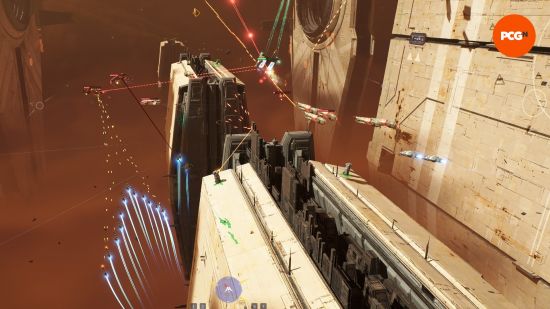
While Homeworld 3 isn’t perfect, it’s authentically Homeworld. It feels great to be back in command of a vast mothership once again, and while this doesn’t feel as revolutionary as the first game did in 1999, it’s still a strikingly beautiful game to see in action. Ion frigates focusing fire on Incarnate destroyers as resource controllers latch onto and commandeer enemy missile boats, interceptor contrails creating luminous combs as they wheel around to face new threats, lasers and torpedoes winking their way across space to collide with enemy hulls, the blue shockwave of a hyperspace drive going critical in the midst of an asteroid storm… Everything in Homeworld 3 is a sight to behold and savor.
With any luck, we won’t have to wait twenty years for the sequel.
